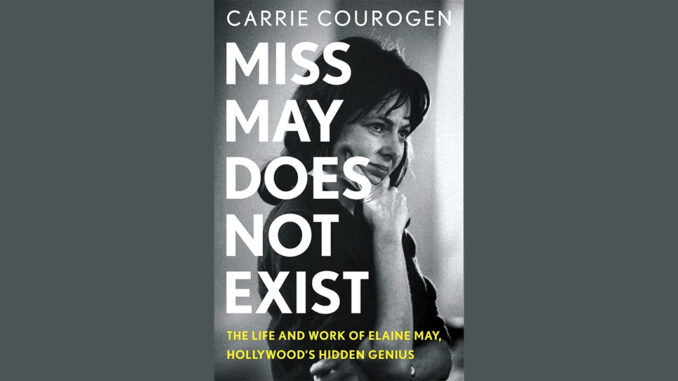
Groundbreaking comedian, writer and filmmaker Elaine May charted her own fearlessly original path in Hollywood and the theater world over the decades. Shunning the spotlight and reluctant to talk to reporters, her name might not be as well known as her comedy partner, Mike Nichols, but Carrie Courogen’s engaging biography aims to correct that.
Courogen did not score an interview with May, who is 92 and lives in New York, but interviewed dozens of her friends and colleagues who all give valuable insight into her life and career.
Born in 1932, May had an unconventional upbringing, traveling around the country as her father, a Yiddish theater actor, performed vaudeville. She never finished high school and was devastated by the death of her father at age 12.
Whip-smart and fiercely witted, May found herself at the University of Chicago in the 1950s and broke into the emerging comedy scene there, helping pioneer “improv,” a style of comedy based on improvisation still prevalent today. Teaming up with her comedy soul mate, Nichols, the duo of “Nichols and May” recorded several hit comedy records and had a successful Broadway show before separating to pursue solo careers in 1961.
Rail thin, endlessly smoking cigars and cigarettes, and known for an unkempt appearance, May brought exacting perfectionism to every project, for better or worse, from acting to directing to writing plays. She worked on the screenplay for 1978’s “Heaven Can Wait” and the 1996 Nichols film “The Birdcage.” She was a highly sought-after script doctor, brought in to punch up screenplays for films including 1981’s “Reds” and 1982’s “Tootsie,” though she usually refused to be credited.
But while her successes may have gone under the radar, her failures were legendary. Her commitment to finding the “truth” in every scene, often through improvisation, led to arduous film shoots. Directing the 1976 crime caper “Mikey and Nicky,” she shot 1.4 million feet of film — 259 hours of raw footage — and then edited it for a year. Paramount eventually sued her to turn over the film.
Her next directing debacle was 1987’s high-profile flop “Ishtar,” a comedy filmed in Morocco. Deserved or not, Courogen writes, “Ishtar” became a punchline and shorthand for box office disaster.
“If all the people who hate ‘Ishtar’ had seen it, I would be a rich woman today,” May quipped 20 years after the release.
May never directed a feature film again, though she kept busy with other projects, including winning a Tony in 2019 for “The Waverly Gallery.” In recent years, May has been recognized by newer generations as the maverick she is, a director of movies who stayed true to her vision even if it meant being labeled a “difficult” woman director.
